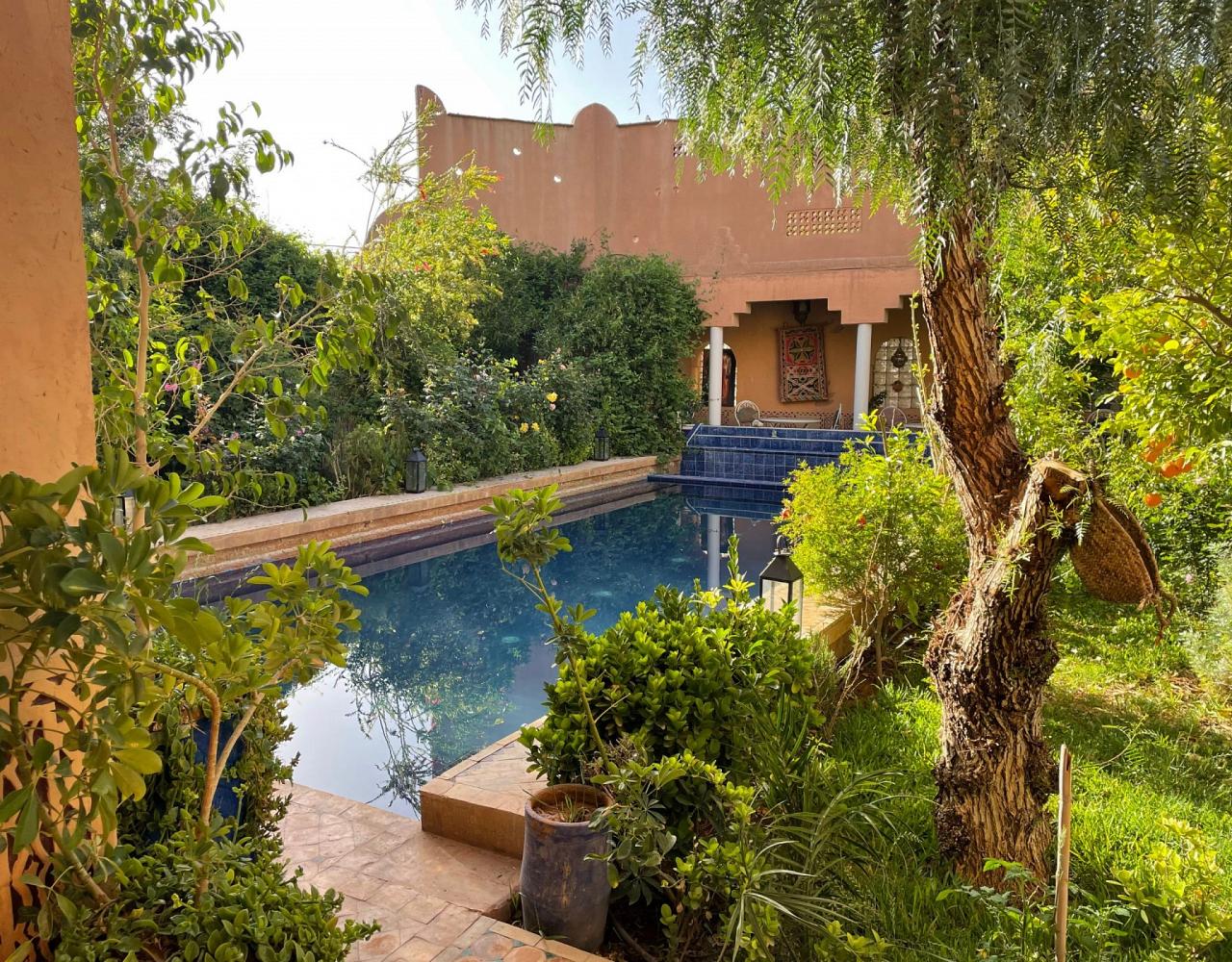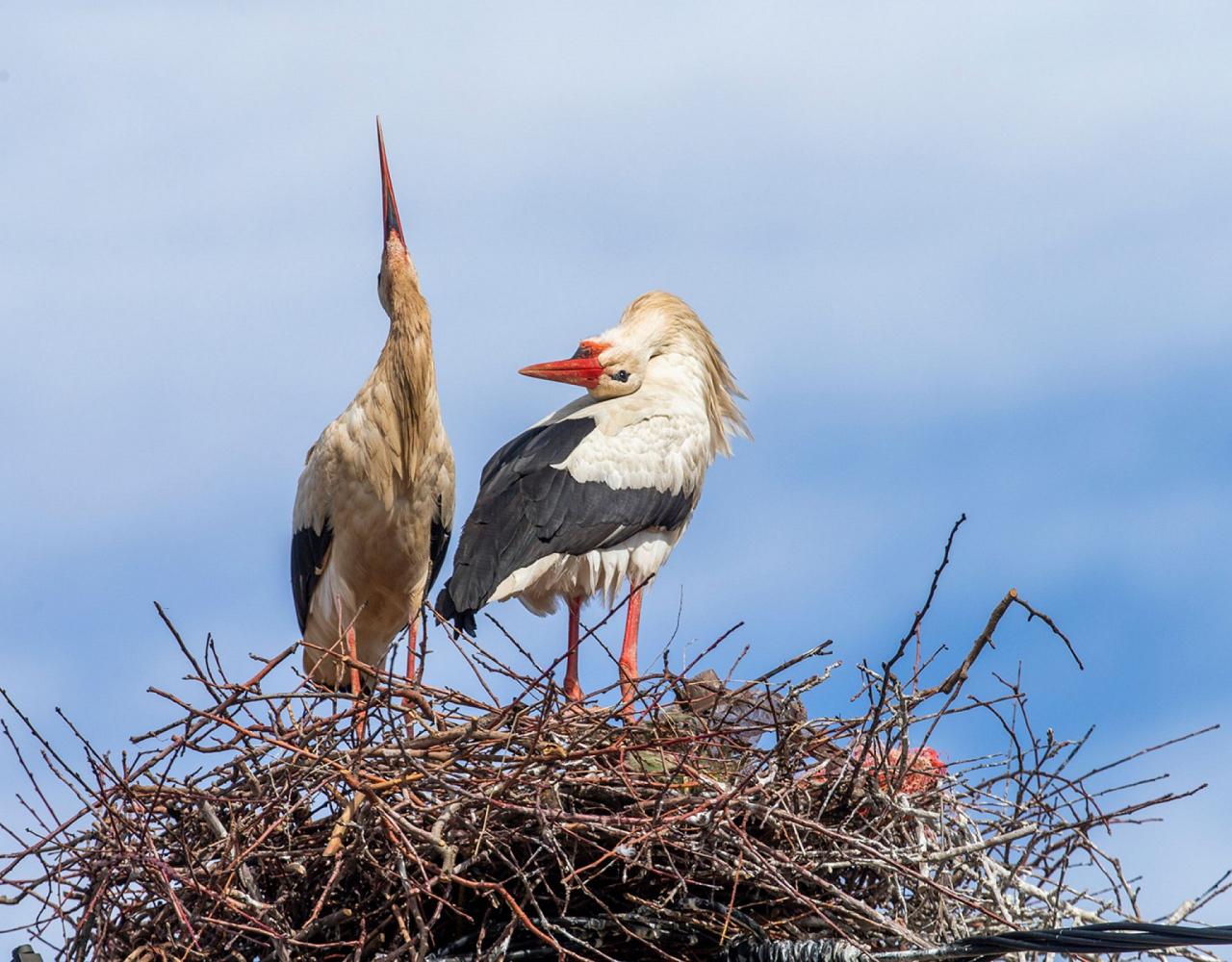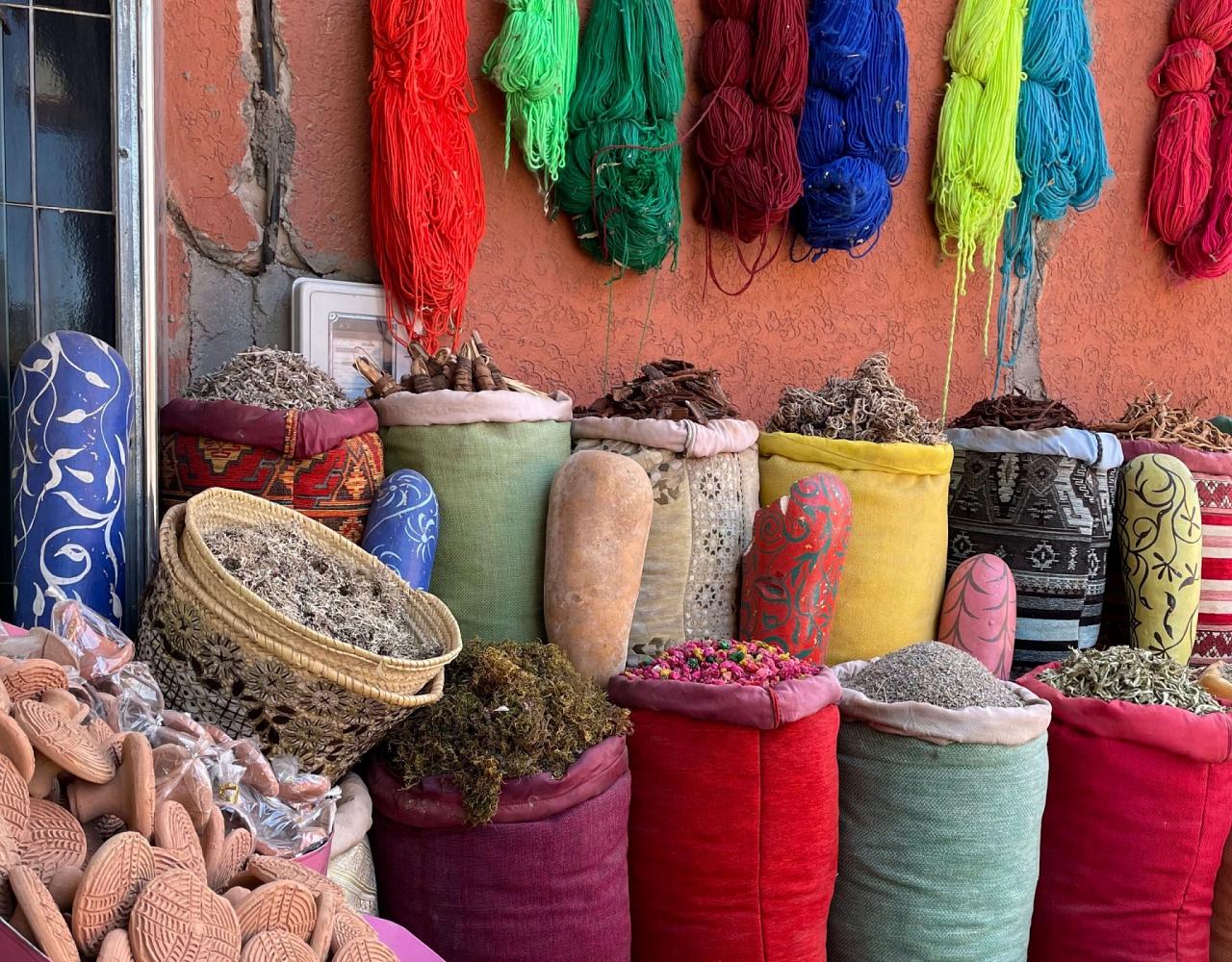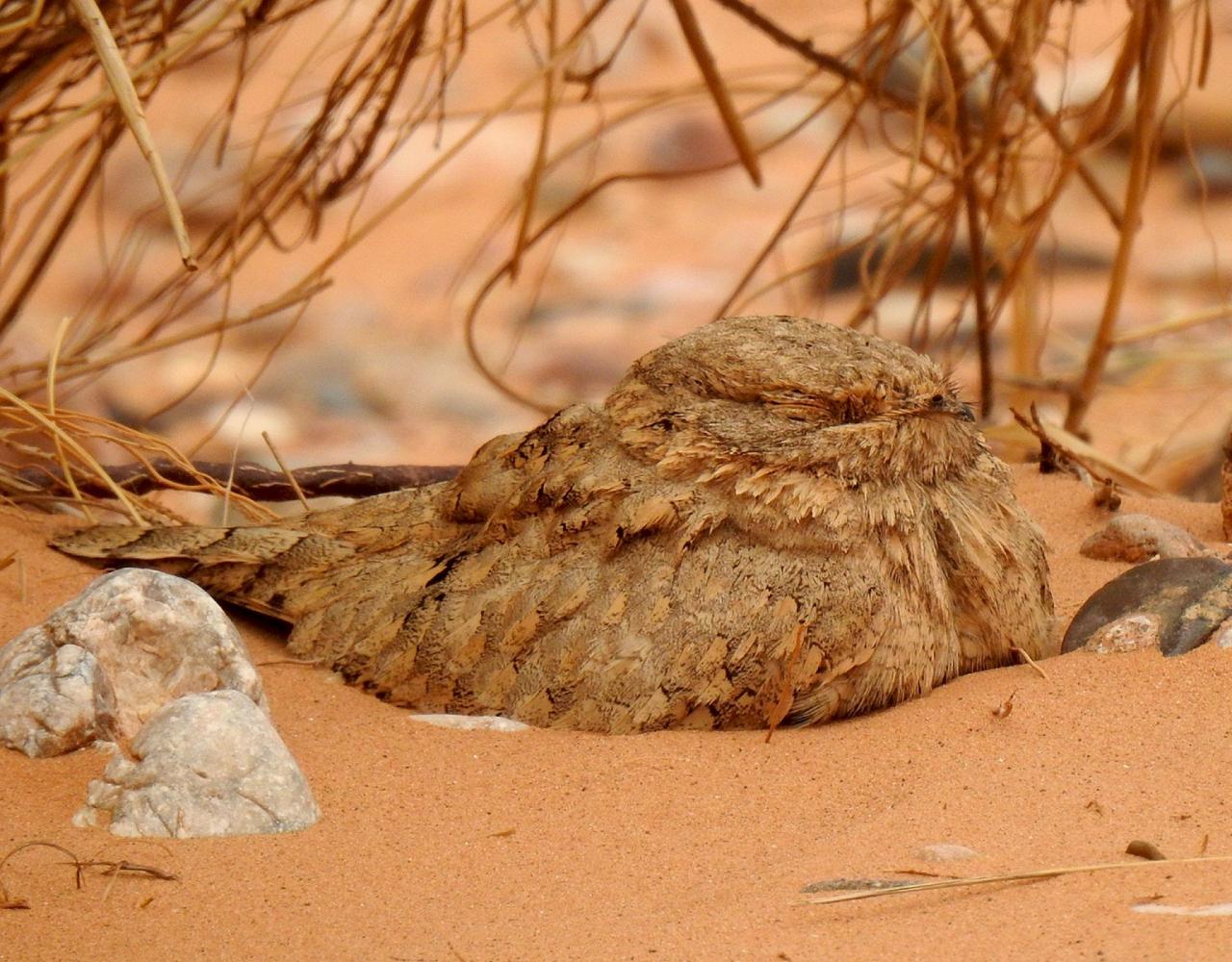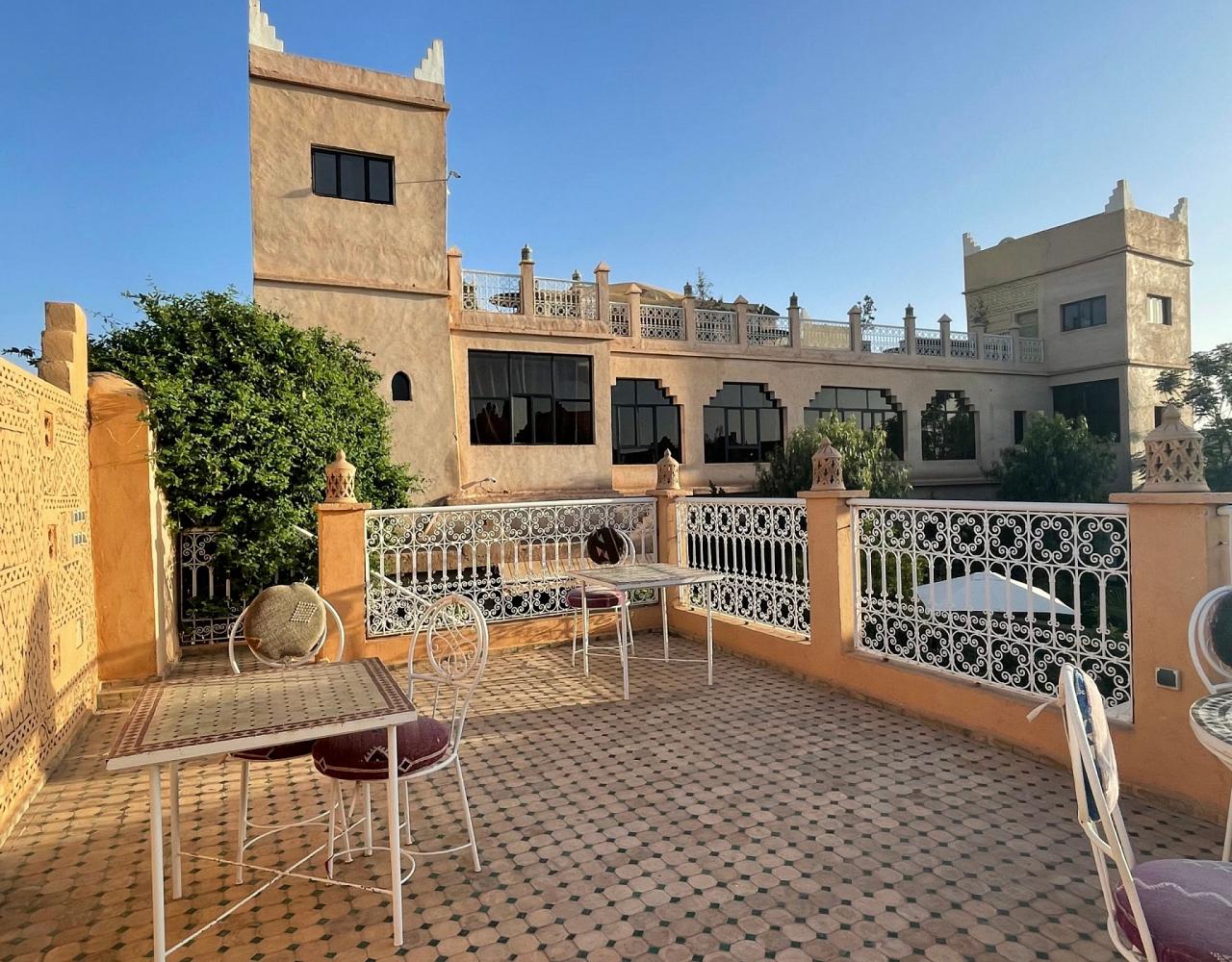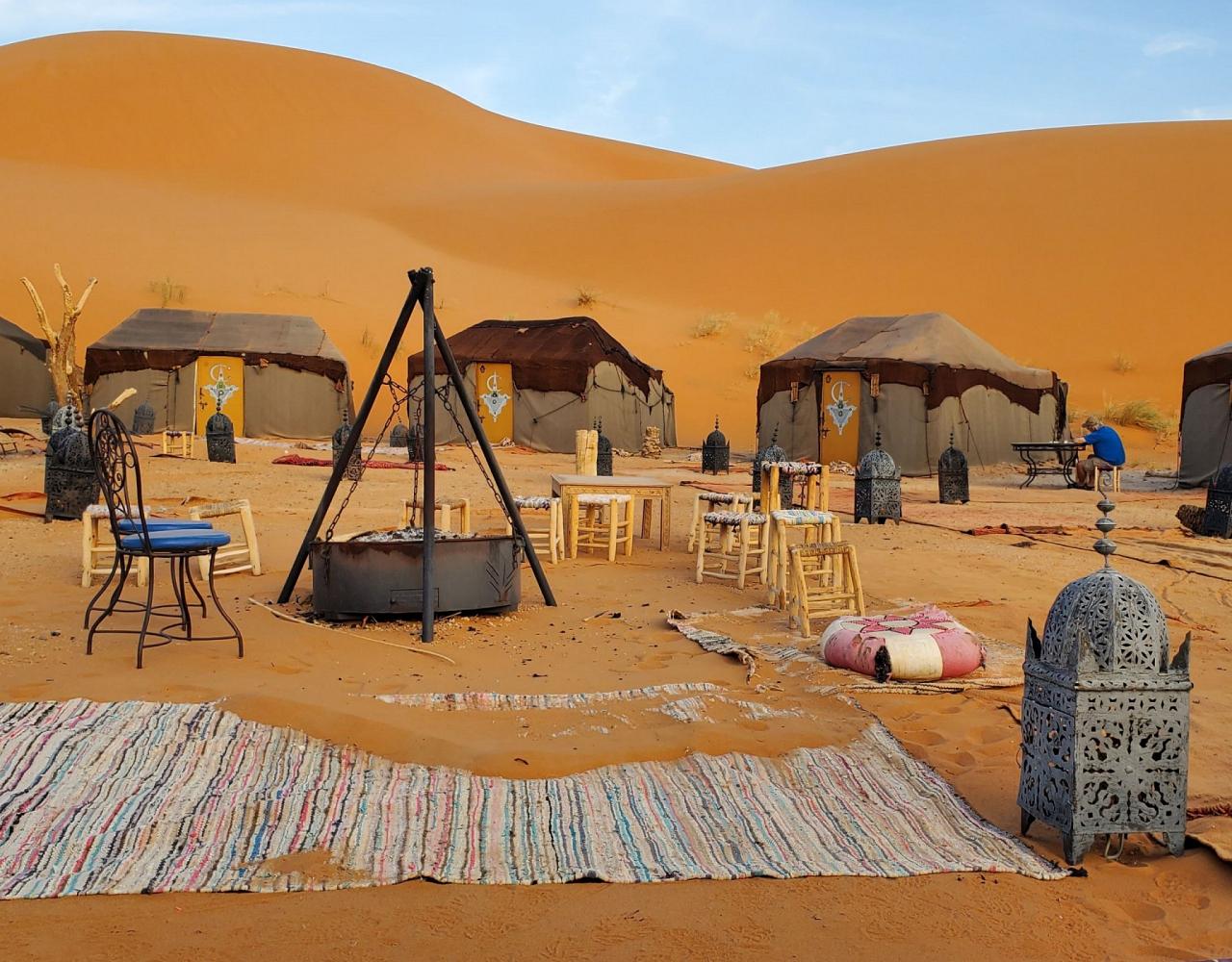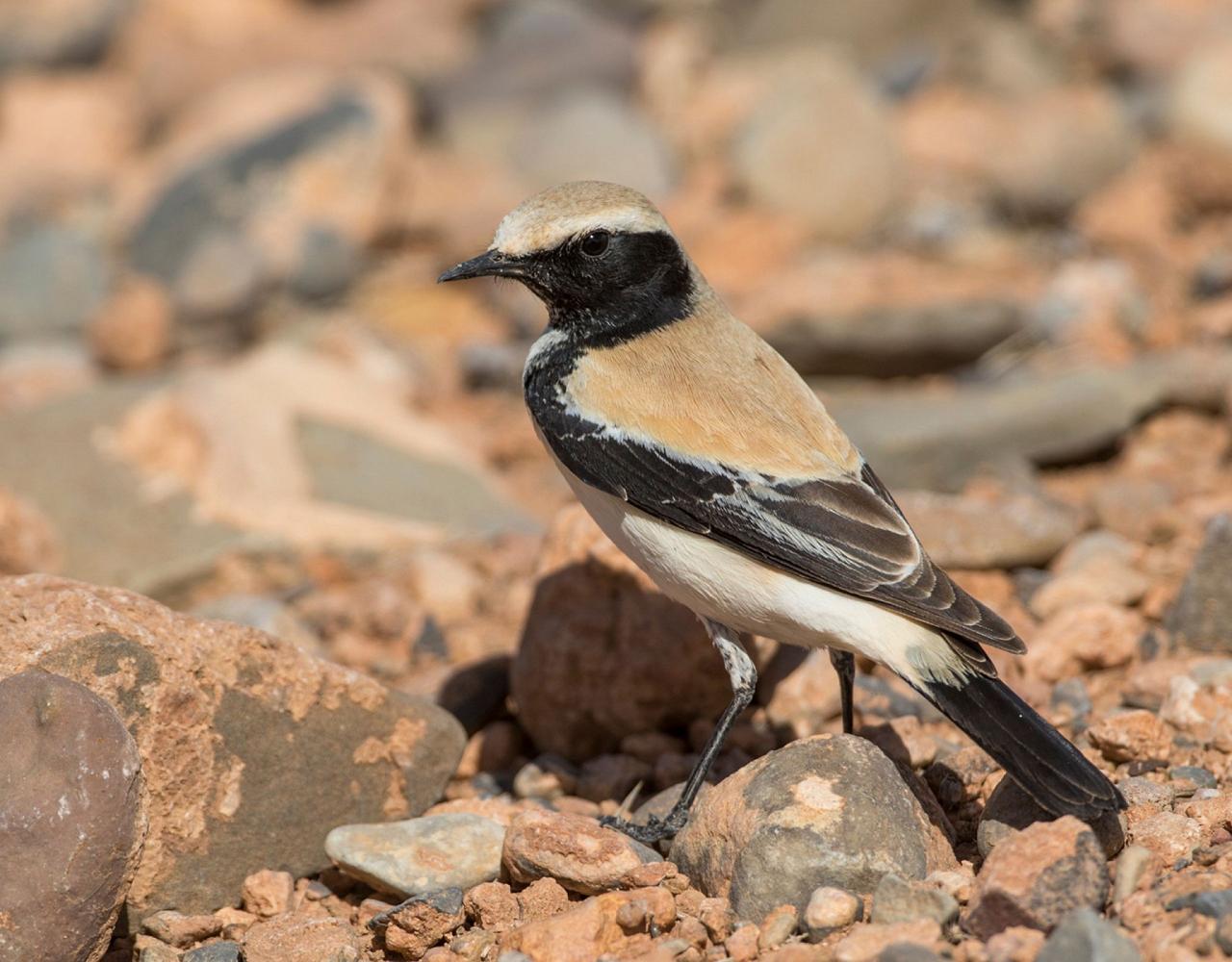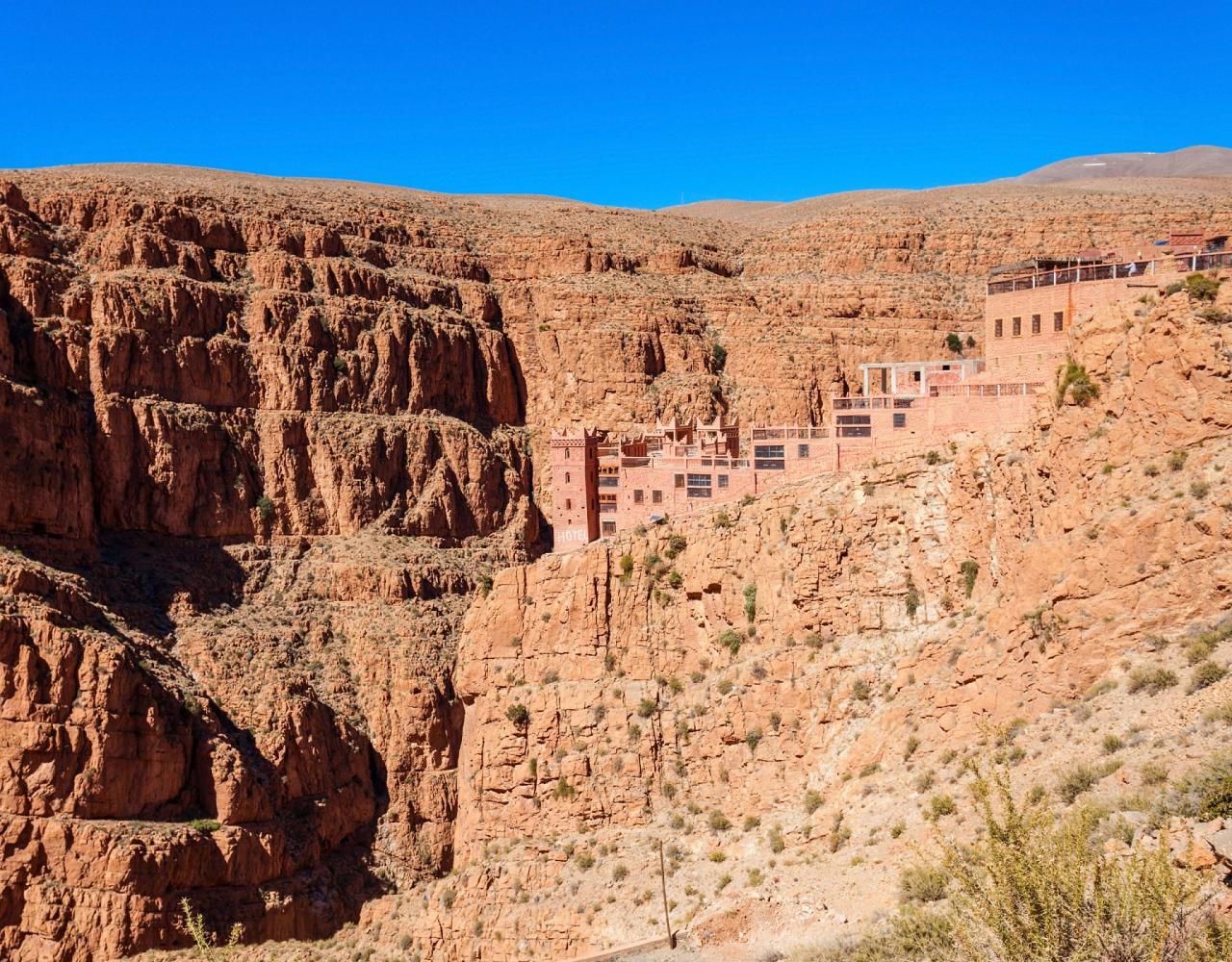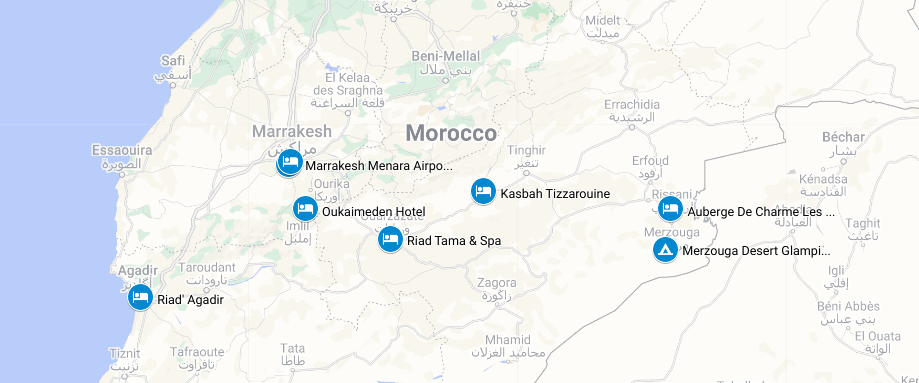- Overview
- Full Itinerary
- Photo Gallery
- Costing
- Travel Details
- Trip Reports
- Guides
- Map
- Know Before You Go
Discover the intrigue, rich birdlife, and dramatic landscapes of Morocco. Explore Marrakech’s famous Medina and Souk with your guide, journey across the highest pass in the High Atlas Mountains, bird the breathtaking Sahara, walk palm-fringed wadis for migrants, search for Egyptian Nightjar, Desert Warbler, Crowned and Spotted Sandgrouse, Hoopoe Lark, Cream-colored Courser, Fulvous Babbler, Lanner Falcon, and more. Witness sunrise over the high sand dunes—pure inspiration! Food is delicious and in typical Naturalist Journeys style, we have fun and soak in all of Morocco’s rich nature and culture.
The scenery along the route is other worldly, and we want to have time to take it all in—birds, history, geology, culture, and cuisine! This tour is designed to pair perfectly with our Spain Birding & Nature tour or runs well as a stand-alone.
This tour is designed to pair perfectly with our Spain tour or runs well as a stand-alone.
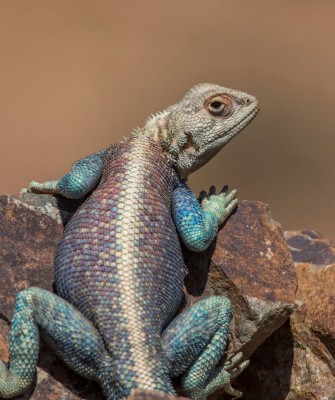
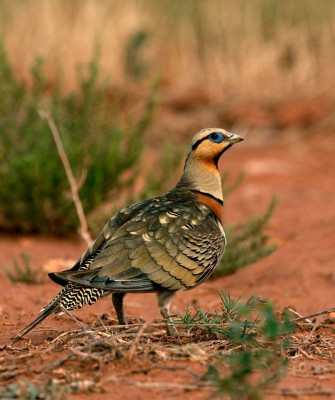
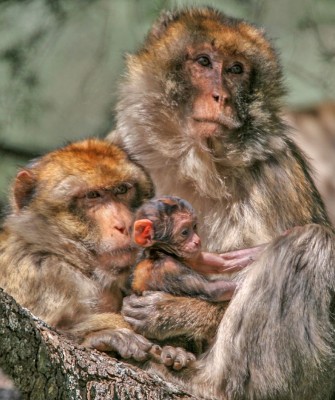
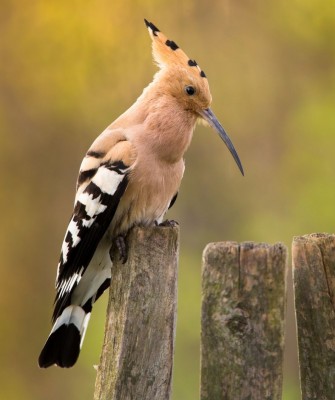
Tour Highlights
- Arrive in Marrakech and get birding right away! Our hotel’s gardens are the perfect place to start your trip list
- Experience the varied habitats of the High Atlas Mountains, from lush green vegetation to sparse steep slopes
- Drive up to Oukaïmeden, a ski resort in the High Atlas Mountains, in search of high mountain species
- Witness the Sahara Desert, with views that take your breath away
- Experience small patches of greenery deep in the desert, magnets for migrating and resident birds
- Watch elusive sandgrouse at a desert waterhole
- Traverse the desert dunes in 4x4 vehicles
- Take in the geologic wonder of Gorges du Dades, a stunning, deep-sided valley
- Indulge a bit—we take time to enjoy the delicious culinary offerings along the way
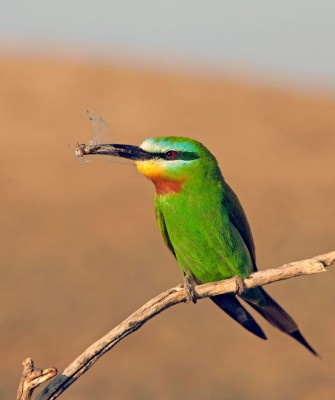
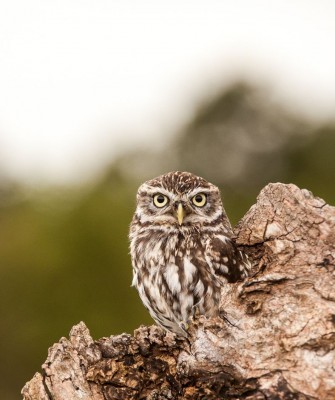
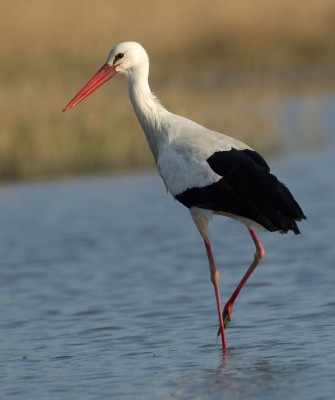
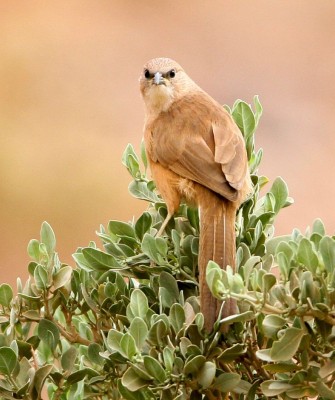
Trip Itinerary
Itineraries are guidelines; variations in itinerary may occur to account for weather, road conditions, closures, etc. and to maximize your experience.
Tues., Apr. 1 Arrivals
Arrive today at Marrakech Airport, where you are met to transfer to our hotel. Depending on arrival times you can bird the hotel gardens or simply rest after a long day of travel. Booted Eagle, and Little and Pallid Swifts are regulars above the gardens. Gather for some late-afternoon garden birding and enjoy a welcome dinner with your guide and travel companions. Some may want to arrive early to explore the city; we are in an area that is quite comfortable to walk in and enjoy.
Accommodations at Hotel Farah Marrakech or similar (D)
Wed., Apr. 2 Marrakech’s Medina & Souk | High Atlas Mountains
This morning we explore the famous Medina and Souk of Marrakech with a local guide that shares history and a passion for Morocco’s culture. Imagine the sights, sounds, and smells of this stunning market! We also enjoy lunch here, then head on to Morocco’s natural highlights, taking off on a scenic drive into our next lodgings in the mountains, with some birding stops in route, particularly to survey for the elusive Barbary Partridge.
The northern aspect of the Atlas Mountain range is influenced by the Atlantic Ocean; hence the vegetation is green and lush, but as we climb the landscape changes and vegetation clings to areas where water passes and becomes sparse on the steep slopes of the multi-colored mountains. As we go, we make stops that give us a leg stretch and a chance to find the elusive Levaillant’s Woodpecker. It’s a dramatic part of the country and we enjoy this landscape in depth.
Accommodations at Guesthouse Mamouchthke or similar near Oukaïmeden (B,L,D)
Thurs., Apr. 3 High Atlas Mountains Full Day | Oukaïmeden
Enjoy a full day of birding a scenic valley and national park of Morocco’s High Atlas Mountains, where the views are spectacular and varied. The area we visit also has a ski area, where we enjoy lunch at a café.
This part of the journey presents contrast to our desert experience; mountain specialties include finding possible Tristram’s Warbler, Atlas Horned Lark, Crimson-winged Finch, Seebohm’s Wheatear, Alpine Chough, and Red-billed Chough; we also hope for good views of Barbary Falcon and Moussier’s Redstart. Dipper and Common Rock Thrush might also be seen here along a rushing stream we explore; wildflowers are lovely here as well. Our previous visits and success at finding these key birds has ranged from very easy to difficult—much depends on the weather, so all things crossed the weather is kind and we have no difficulties finding our birds.
Views abound as do wildflowers in bloom. A great way to start our adventures.
Accommodations at Guesthouse Mamouchthke or similar (B,L,D)
Fri., Apr. 4 Travel Day – Tizi N’Tichka Pass
We return down the mountain grade today, then climb it again to negotiate another high pass of the Atlas Mountains. We can take a break for our lunch at the top of the pass and wander more in the alpine realm if we missed some species yesterday—or snap some scenic shots and continue onward. Rock Bunting and Rock Sparrow are possible here. It is a day of amazing scenery and wonderful birds.
We make our way to the gorgeous town of Ouarzazate, the gateway to the Sahara Desert and famous for its movie studios (Lawrence of Arabia was filmed here). We stop at river crossings where we may find green gardens and species such as Melodious, Bonelli’s, Subapline, and Spectacled Warblers along with many other species. Before getting to town, we explore a section of rocky desert with good chances of raptors, Trumpeter Finches, and more. This is our first contact with arid habitat species. We aim to arrive at our hotel with time for guests to relax and clean up before dinner and the run through of our bird checklist. Enjoy the rich texture of Moroccan rugs and furnishings and some local riverine birding.
Accommodations at Riad Tama or similar (B,L,D)
Sat., Apr. 5 Ouarzazate | El Mansour Barrage | Boumalne Dades
This morning we bird our way from our delightful riad visiting the El Mansour reservoir and the surrounding high steppe plateau. Here we view with scopes for a host of species including herons, egrets, and even Osprey. We may find Ruddy Shelduck, Little and Great-crested Grebes, both Black and Whiskered Terns, Great Cormorant, both Little and Great Egrets, and above us several swift species. The approach road should also produce birds such as European Bee Eater and Black-eared Wheatear that are en route to Europe.
The route is also a good one to watch the world go by as we drive; catch scenes of daily life for rural Moroccans tending fields, moving livestock, unloading their camels or donkeys, and enjoying tea and conversation along the roadside. We enjoy our lunch in the Boumalne area and then explore the rocky steppes in the famous birding area known as the Tagdilt track, walking out into open areas looking for Temminck’s, Thick-billed, and Greater Short-toed Larks, Cream-colored Courser, Red-rumped Wheatear, and a host of other species, including raptors. Time passes quickly; we settle into new lodgings, then enjoy our delightful Kasbah dinner, and a chance to catch up on our species list this evening.
Accommodations at Kasbah Tizzarouine or similar (B,L,D)
Sun., Apr. 6 Boumaine | Gorges du Dades | Draa Valley
We start early today, focusing on the best time window along the Tagdilt track that gives us the best chances for Sandgrouse, and all the other species not seen the day before. This morning we drive up into and through the Gorges du Dades, an amazing deep sided valley with equally amazing geological features. Our photographers can savor the rich colors and textures of this dramatic landscape as we stop for views and a chance to scan for birds. The road up the Gorge winds between villages with classic kasbahs and mosques, and many brick buildings with flat roofs. The gorge itself is quite steep; we watch for Crag Martin and Gray Wagtail, and hopefully find Tristram’s Warbler by walking up a small but steep, shrubby ravine at our turn-around spot, a small coffee shop.
Lunch is at one of our favorite spots today, in the garden of Riad Dades Birds in the Dades Valley. Here we enjoy wonderful food and hospitality and let the birds come to us, including a favorite of many, the Hoopoe!
After a little break to freshen up or have a siesta at our hotel, we drive on to another stunning location nearby with cliffs, wadis, and rocky desert and a good area for Lanner Falcon, Atlas Long-legged Buzzard and Pharaoh Eagle Owl.
Accommodations at Kasbah Tizzarouine or similar (B,L,D)
Mon., Apr. 7 Boumalne de Dades | Todra Gorges | Sahara Desert. Erg Chebbi Sand Dunes
Today is largely a travel day, starting with a drive up and through the Todra Gorges for amazing geological formations. The cliff habitat provides an opportunity for martins, warblers, and raptors such us the Bonelli´s Eagle. As we leave the Draa Valley, an extensive river system lined by palmeries and small villages unfolds; it is also a main route for migrant birds arriving from the vast expanse of the Sahara Desert. We should find our first Blue-cheeked Bee-Eater here among other exotic migrants, so we need to be in our best “find the bird” mode as we head into the desert.
From this wonderful valley we head east and make our way to the largest sand dune complex of the Moroccan Sahara, Erg Chebbi. We make this unique area our home for three nights.
Accommodations at Auberge Les Dunes d’Or Merzouga or similar (B,L,D)
Tues., Apr. 8 Full Day in the Sahara
We spend a day in the desert, traversing the dunes and open areas in our 4x4 vehicles, searching for Egyptian Nightjar, Desert Warbler, Crowned and Spotted Sandgrouse, Hoopoe Lark, Cream-colored Courser, and Lanner Falcon to name but a few! The scenery is stunning, and we really are on an adventure day with birds.
Later in the day we enjoy lunch and then make our way to the countryside orchards and palmeries around Rissani. Walking along irrigated crops, we seek Fulvous Babblers, Rufous-tailed Bushchat Robin, Maghreb Lark, Isabelline and Olivaceous Warblers.
Accommodations at Auberge Les Dunes d’Or Merzouga or similar (B,L,D)
Wed., Apr. 9 More Time in the Sahara | Explore Igrane Gardens
We added another day to this area to take in some of the temporary wetlands and small pocket oasis for desert birding. This also gives us time to look for a few of the more challenging species such as Bar-tailed and Dunn’s Larks. Depending on winter rainfall we visit desert lagoons and if they are present then prepare for a wonderful selection of shorebirds including Marbled Duck, Ruddy Shelduck, and Greater Flamingo.
A visit to the Igrane gardens provides the perfect spot to enjoy the local and migratory passerines while walking through the shady palmeries and orchards.
Accommodations at Auberge Les Dunes d’Or Merzouga or similar (B,L,D)
Thurs., Apr. 10 Merzouga | Birding on Return to Ouarzazate
This morning we depart and take a leisurely drive to our next destination, a return to Ouarzazate. The journey provides places where we can stop to seek a few birds and we also pass through the Valley of the Roses, a famous region in Morocco where women’s cooperatives harvest rose petals and rosehips to manufacture cosmetics and lotions. If the group wants to view these products, we make time for stopping at a cooperative—a big hit for our group in years’ past.
We take our lunch at a desert Kasbah near to the town of Skoura, or journey onwards for lunch in Ouarzazate. We stop at a local reservoir for some water birds, viewing with scopes for a host of species including herons, egrets, and even Osprey. We may find Ruddy Sheldrake, Little and Great-crested Grebes, both Black and Whiskered Terns, Great Cormorant, both Little and Great Egrets, and above us several swift species. The approach road should also produce birds such as European Bee Eater and Black-eared Wheatear that are en route to Europe.
After our lunch we search a couple of green areas, cultivated by local villagers, to look for migrants such as roller and warbler species. Our hotel is up on a bluff with a fine view of an ancient Kasbah used as a film set for Game of Thrones. Those that wish can walk down the entry road to bird there, walking among planted dates and pomegranate trees, often an oasis for migrants passing through. Whinchat like the rocky hillside on our route and near the kasbah we might find Iberian Chiffchaff, White Wagtail (Moroccan race), both Spotted and European Pied Flycatchers, and European Turtle and Eurasian Collared Doves.
Hospitality at the Riad is memorable, we enjoy conversation perched in a sunny alcove with the taste and smell of fresh Moroccan mint tea. Local rugs and furnishings give a cozy feel. Dinner is one of the best of the trip, perhaps a tagine carefully crafted by the family from running this small property from their private recipes.
Accommodations at Hotel Riad Tamadakhte or similar (B,L,D)
Fri., Apr. 11 Return to Marrakech | Ounila Valley
Enjoy a fine breakfast at our Riad before we continue on our loop drive back up and over the Atlas Mountains. We pass a World Heritage Site and stop for views of it, the Ksar of Ait-Ben-Haddou. Geology along this stretch is some of the best of the trip, with intricate colors and folds in the rock like our finest southwestern scenery. Follow the Ounila Valley for its length and then ascend to meet up with the road we first used to cross the pass. On stops we may find Coal Tit, Mistle Thrush, and Common Raven. Along the route we look for Tawny and Tree Pipits, Black-eared Wheatear, Blue Rock-Thrush, and we another chance for both Tristram’s Warbler and Rock Sparrow.
We chose this route, looping back through Marrakech both for scenery and due to road conditions, the alternate road crossing over to Agadir is dusty, bumpy, and slow. This route keeps us on pavement once we’re back at the pass. We look for birds along the way, finding possibly Little Owl or Woodchat Shrike, arriving toward evening at our familiar hotel.
Accommodations at Hotel Zalagh Kasbah Marrakech or similar (B,L,D)
Sat., Apr. 12 The Coast at Agadir | Shorebirds, Waders & Gulls
On a modern road, we can be in Agadir, a popular winter destination known for its beaches, on the Atlantic coast of Morocco in about three hours. We arrive in time for lunch and then spend the afternoon birding at the Oued Souss. Here we add a stunning variety of shorebirds and waterbirds, including gulls and terns to our list and we experience whole new habitats and vistas. About ten miles south of the city, we enjoy a leisurely walk along an embankment as we look for stilts and other waders. The mouth of the Souss River is a Ramsar site, indicating its international significance for conservation. We look for Barbary Falcon and keep an eye on surrounding trees for raptors. Laughing Dove and Maghreb Magpie are found as well as the wetland species.
We return to the city for time to freshen up, enjoy dinner and catch up on our growing species list.
Accommodations at Hotel Riad Agadir or similar (B,L,D)
Sun., Apr. 13 Oued Souss Massa National Park
The Oued Souss and Oued Massa estuaries are located at opposite ends of the 130+ square mile national park along Morocco’s scenic coastline. We have the full day to visit, as we seek out one of the rarest birds in the world, the Northern Bald Ibis. Three of Morocco’s four populations are protected here. The ibis nesting colonies and roost-sites are located on coastal cliffs within the national park and can be viewed safely with scopes from a distance. Coastal steppe habitats and fields are used as feeding areas and with luck we see them flying between areas as well. The park has a nature trail and visitor center. In addition to looking for the ibis, we explore the Massa River estuary which also has many great species, including Squacco and Purple Heron, Plain Martin, and European Thick-knee. We have the chance to use our scopes for some sea watching and as time permits, we may go inland a way to the local reservoir catchment of the Massa River. Black-crowned Tchagra is found here locally. Enjoy some fresh local seafood at dinner if you like and tally up our checklist.
Accommodations at Hotel Riad Agadir or similar (B,L,D)
Mon., Apr. 14 Oued Souss | Marrakech
We linger a bit at this wonderful coast to sample bird life at the Souss estuary. Established in 1991, the park is one of Morocco’s top birding locations so the more time here the better. Gulls may include Mediterranean, Slender-billed, and Audouin’s; out to sea we look for Northern Gannets diving. We scan the estuary and adjacent flooded fields, then return to pack up and depart. We then journey back to Marrakech on a modern comfortable road, birding along the way. At dinner we share tour highlights and favorite species—difficult to choose with so many vibrant memories!
Accommodations at Hotel Farah Marrakech or similar (B,L,D)
Tues., Apr. 15 Departures | or, Join Our Spain Tour!
Today is departure day and you may plan your flights at leisure and thus enjoy time to relax depending on your time for the homeward bound flight. Enjoy a very leisurely breakfast with time to pack or venture out to a local garden or park. Lunch can be available for those not leaving until the afternoon or early evening, although this is not included in the cost of the tour. Those linking this tour with our Spain Birding & Nature Tour depart for Madrid at your leisure today. (B)
Cost of the Journey
Cost of the journey is per person, based on occupancy: $5590 DBL / $6180 SGL*, from Marrakesh. Cost includes all accommodations; all meals as stated in the itinerary; group airport transfers; ground transportation; professional guide services; park, preserve, and other activity fees; and miscellaneous program expenses. Tour price does not include: roundtrip airfare to and from Marrakesh, or items of a personal nature such as laundry, porterage, telephone charges, or alcoholic beverages. Pair this Morocco tour with our Spain Birding & Nature Tour and save $200 per person. Don’t miss it!
*This tour was priced based on the exchange rate on April 22, 2024. If there is a significant increase in the exchange rate, Naturalist Journeys has the right to adjust pricing to accommodate.
Travel Details
Please plan to make air travel plans only after the minimum group size has been met. We will send you a confirmation email as soon as the trip has been confirmed.
Arrival and Departure Airport: Marrakesh Menara Airport (RAK)
Arrival Details: Plan to arrive April 1, 2025, at your leisure
Departure Details: Plans flights to depart April 15, 2025, at your leisure
Travel Tips: If you arrive early to rest up from your travels, we can book you an early night at our first night tour hotel. If you want to explore Marrakesh, there are plenty of things to see! Jardin Marjorelle is a beautiful botanical garden that’s also good for birding. The Berber Museum is located within the gardens and has exhibits on the history and art of the Berbers, the most ancient people of North Africa. If you want to tour an extravagant palace that is a great example of Moroccan architecture, then visit Bahia Palace. The 19th century building has stunning tiles and artwork along with beautiful gardens and courtyards.
Entry Requirements: See "Essential Information" section under the "Know Before You Go” tab.
Browse below for trip reports and species lists from past versions of this and other tours from this destination.
Morocco
- April 2022
- September 2022
- April 2023
- April 2025
-
Victor Porras — Spain & Morocco Expert

Raised right next to the mudflats of the Bay of Cádiz, Victor developed a total fascination for all aspects of natural history from a very early age. A lifelong birder, with extensive travel industry experience in various areas, he began leading wildlife activities during the ten years he lived in Ireland, Germany and Poland. Victor joined Birding Tarifa in 2017, looking after travel operations, participating in field surveys and guiding birdwatching tours always with great enthusiasm and a friendly disposition. Additionally, he enjoys his role as eBird reviewer for the province of Càdiz.
Other trips with Victor Porras — Spain & Morocco Expert
-
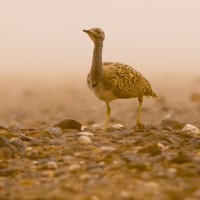 Morocco: Birding & NatureApril 2 - 16, 2026
Morocco: Birding & NatureApril 2 - 16, 2026
-
-
Rick Weiman

Rick lives in Oakland, NJ with his wife Patricia and two adult children, Jack and Annabel. Rick has led birding trips for a number of years as a volunteer for various local nonprofits, and for Oakland residents in his town's 40-acre Great Oak Park. For over 30 years he has counted birds on annual big days to raise dollars for endangered species recovery efforts in his home state. His passion for conservation started during his college years at Rutgers where he majored in Biology, and he has been a trustee of the Conserve Wildlife Foundation of NJ since 2000. His volunteer and fundraising efforts for The Raptor Trust, the largest wild bird rehabilitation center on the east coast, resulted in his addition to their board of trustees in 2018. One of his favorite areas to visit is Central America and he has hosted tours for Naturalist Journeys in Costa Rica, Panama, Guatemala, and Belize. In his spare time besides birding, Rick enjoys playing street hockey, fishing, and visiting the jersey shore, especially Cape May.
Photo credit: Hugh Simmons
Other trips with Rick Weiman
-
 New Hampshire's Mt. Washington Warblers & Bicknell's Thrush - CLOSED - See our Isle Royale tour in August!June 4 - 10, 2025
New Hampshire's Mt. Washington Warblers & Bicknell's Thrush - CLOSED - See our Isle Royale tour in August!June 4 - 10, 2025 -
 Panama: Three Great LodgesJuly 6 - 18, 2025
Panama: Three Great LodgesJuly 6 - 18, 2025 -
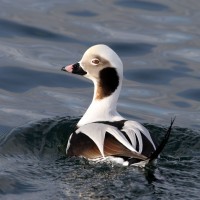 Olympic Peninsula Fall Explorer FULL - Check out Vancouver Island: Coastal Birds, Bears & Whales!September 4 - 11, 2025
Olympic Peninsula Fall Explorer FULL - Check out Vancouver Island: Coastal Birds, Bears & Whales!September 4 - 11, 2025 -
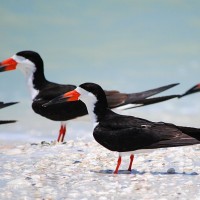 Cape May: Fall MigrationOctober 7 - 13, 2025
Cape May: Fall MigrationOctober 7 - 13, 2025 -
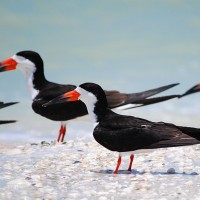 Cape May: Fall MigrationOctober 14 - 20, 2025
Cape May: Fall MigrationOctober 14 - 20, 2025 -
 Southeast Arizona: Sky Island Fall SamplerNovember 2 - 9, 2025
Southeast Arizona: Sky Island Fall SamplerNovember 2 - 9, 2025 -
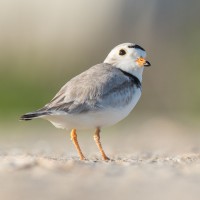 Florida's Winter Warblers & Hidden WondersJanuary 13 - 20, 2026
Florida's Winter Warblers & Hidden WondersJanuary 13 - 20, 2026 -
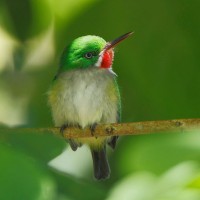 Puerto Rico Birding & Nature A short & sweet birding blitz.February 2 - 8, 2026
Puerto Rico Birding & Nature A short & sweet birding blitz.February 2 - 8, 2026 -
 Incredible Ecuador: Chocó GaloreApril 3 - 12, 2026
Incredible Ecuador: Chocó GaloreApril 3 - 12, 2026 -
 Cape May: Spring MigrationMay 12 - 18, 2026
Cape May: Spring MigrationMay 12 - 18, 2026 -
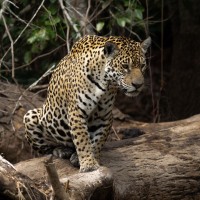 Brazil’s Pantanal: Jaguars! And More…June 24 - July 4, 2026, w/Amazônia extension
Brazil’s Pantanal: Jaguars! And More…June 24 - July 4, 2026, w/Amazônia extension
-
Essential Information +
Pace & Protocols +
Packing List +
Suggested Reading List +
Useful Links +
Photo credits: Banners: Camel (NJ Stock), Dried Spices (NJ Stock), Cream-colored Courser (NJ Stock), Dades Gorge (NJ Stock), Bald Ibis (Stanislav Ferrao via Unsplash), Colorful Textiles (NJ Stock), Morocco Scenic (Peter Verheij) Thumbnails: Lizard (Peter Verheij), Pin-tailed Sandgrouse (NJ Stock), Barbary Macaque (Peter Verheij), Hoopoe (NJ Stock), Blue-cheeked Beeeater (NJ Stock), Little Owl, White Stork (NJ Stock), Fulvous Babbler (Peter Verheij)








